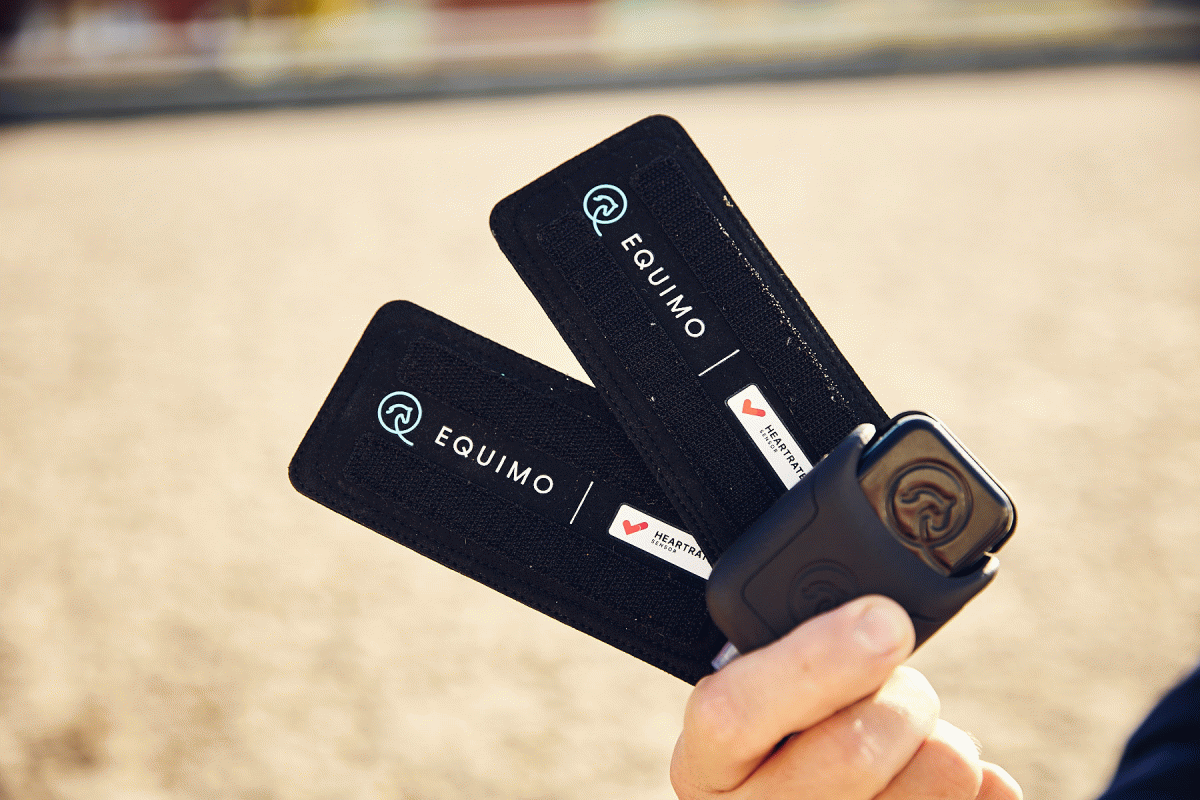
Článek v češtině si můžete přečíst ZDE.
Many equestrians know EQUIMO as a small „box“ that tracks, analyzes, and makes training plans easier. At the beginning of this year, we introduced an addition to our technologies: a device tracking your horse’s heart activity called the Heart Rate Set.
Heart rate tracking devices have become an essential part of sports preparation in recent years. And as the dogma of EQUIMO is training from the horse’s point of view, this evolution has only been a practical step forward.
![]()
Heart Rate Set and EQUIMO tracker
The Heart Rate Set consists of two electrodes (to be attached under the saddle and the girth) and a case for attachment. The electrodes themselves have been developed considering the sensitivity of (not only) sport horses, and they ensure comfortable movement without any pressure or pain. This is possible owing to special materials and the thickness, which is only 4 millimeters.
Horses could run away or bend away from the pressure, and their movement might be impaired (as well as their well-being), considering the greater thickness of the electrodes. That’s why the EQUIMO electrodes are as thin as possible, making them barely noticeable for equine athletes, as proven during testing with endurance riders.
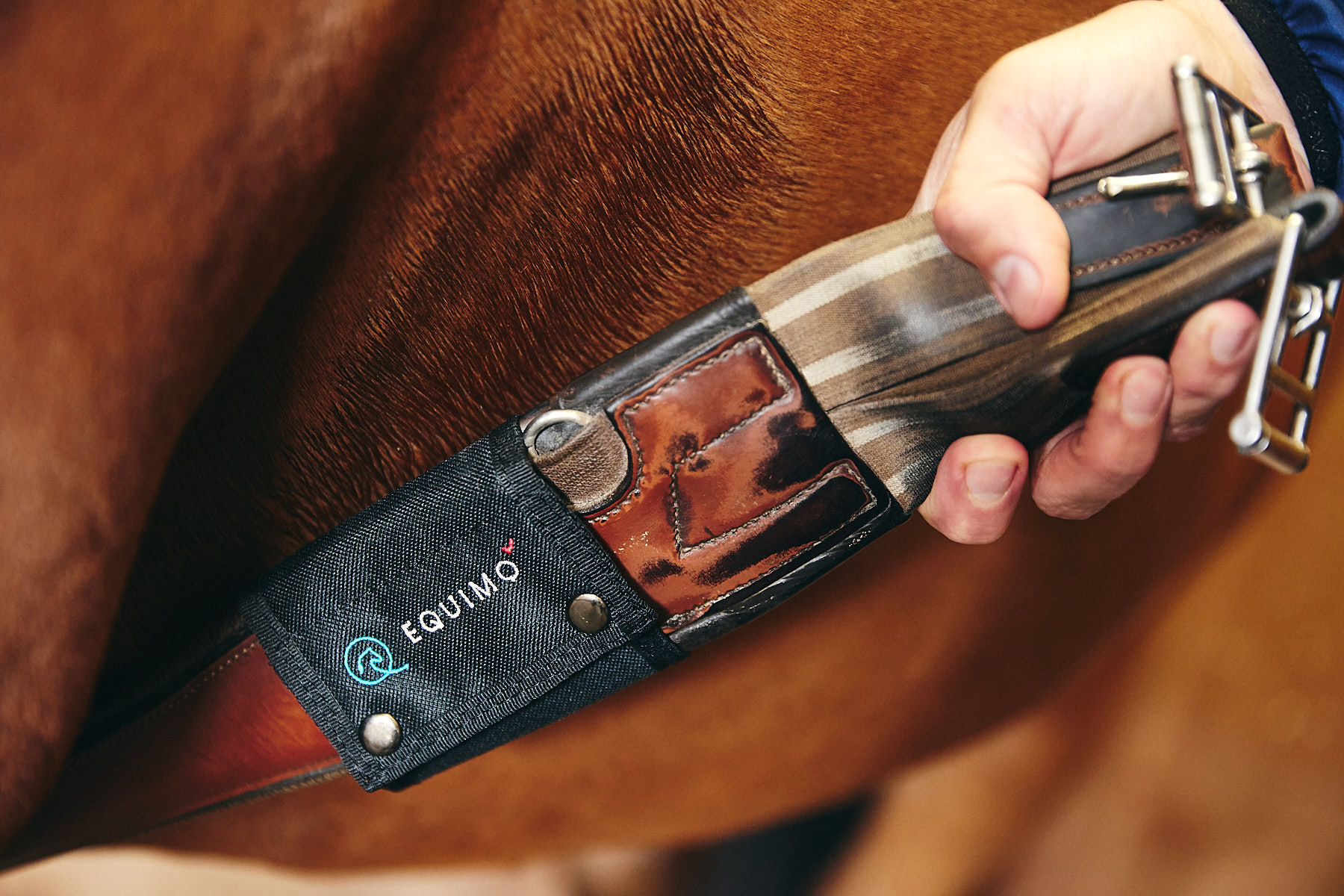
A case for easy attachment of the electrodes
Precise tracking has been the other important value on our minds. The material used for the electrodes ensures that as well: it is the same material used for ECG measuring in human surgery. It does not irritate the skin, and the results are extremely precise.
What about sustainability?
Sustainability, an important factor of innovation in the 21st century, hasn‘t been forgotten. The tracker and its accessories are quite durable which places them out of the „fast consumption“ concept. However, the clip manufacturers have pushed the lines of sustainability even further; the whole clip is made from recycled materials using a method of industrial 3D printing. This makes it as earth-friendly as possible.
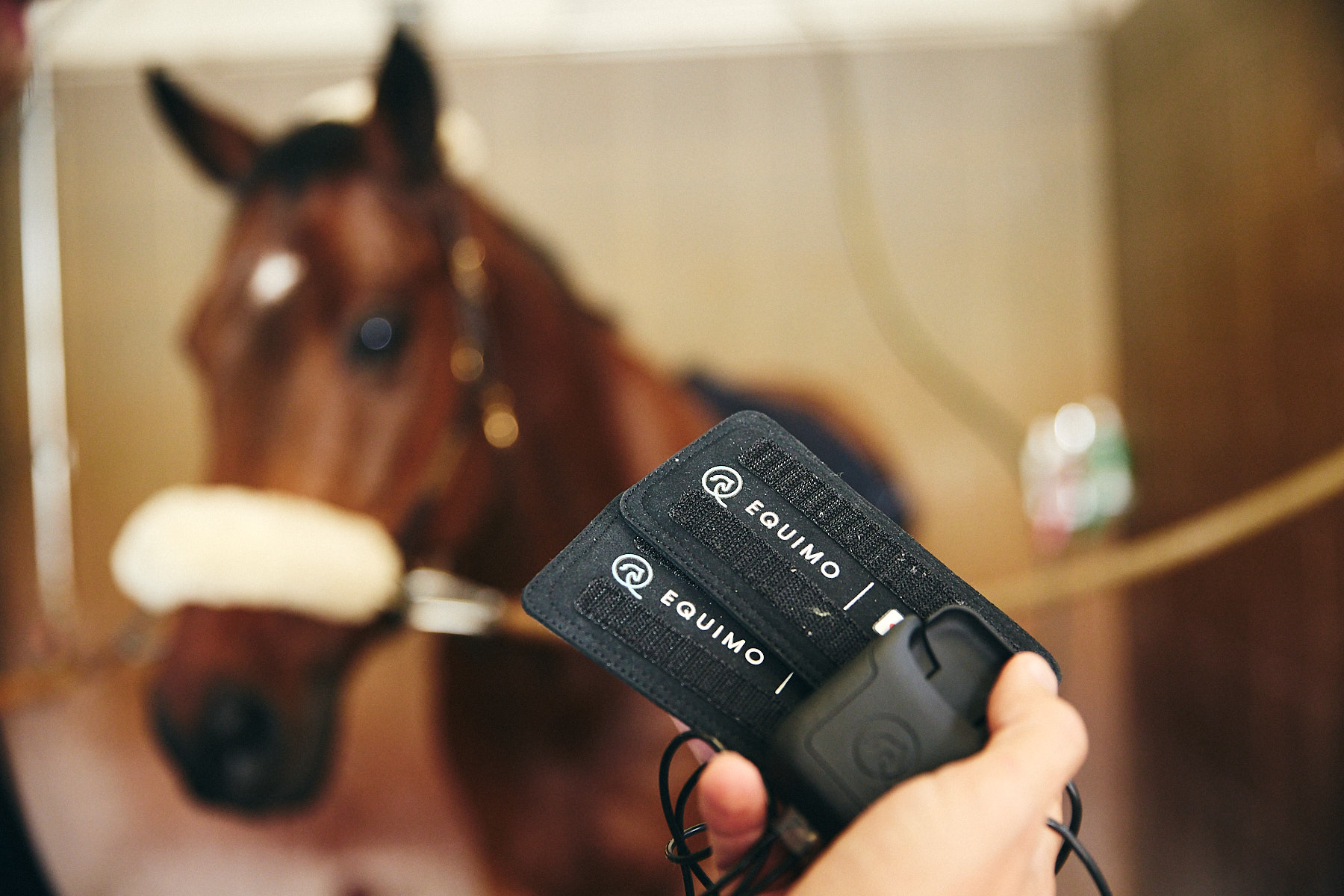
Electrodes from the material used in human surgery and a case from durable yet soft fabric create a perfect combination
Why should you track heart rate?
Heart rate tracking provides essential information about horses‘ fitness, as trained horses reach lower heart rates while exercising and have quicker recovery times (time frame within which the horse’s heart rate returns to initial levels) than untrained horses. Heart rate values also provide insight into monitoring changes in fitness in horses, and we can track any irregularities marking potential health issues.
Heart rate tracking is therefore a perfect way to adjust the training plan according to each individual horse. Owing to the connection in the EQUIMO app, your whole team sees the difficulty of each session and has needed data for further strategy, as well as a warning about possible overworking.
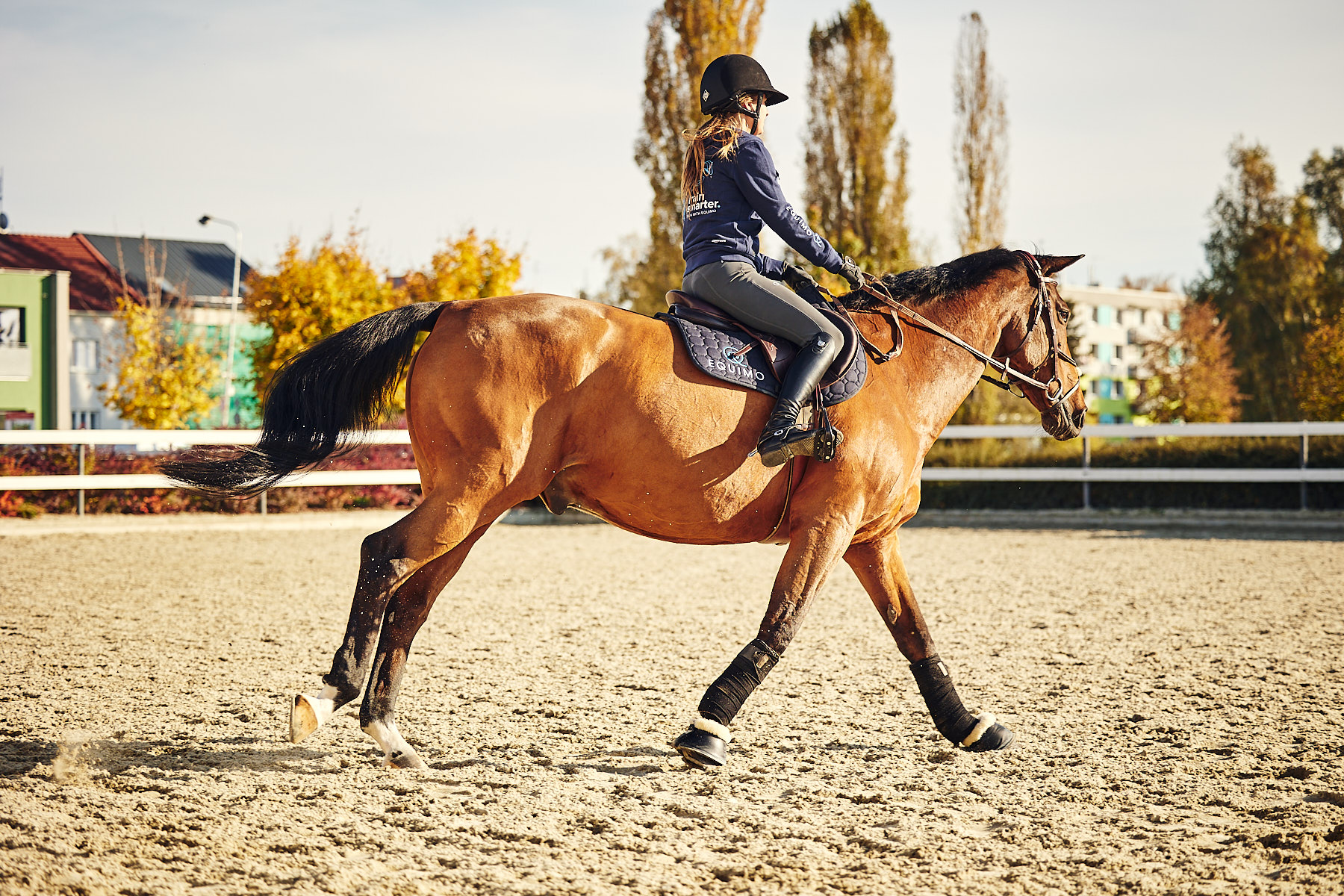
Heart Rate Set provides information on how difficult each session is for your horse
Variation of numbers
Heart rate values are a suitable source of information on how hard your horse has been working. There are, however, several different factors that may affect heart rate values, one of them being age.
Heart rate is faster in young horses than in older horses. Normal adult horses have a heart rate of 25 to 40 beats per minute. Newborn foals‘ heart rates range from 80 to 120 beats per minute and progressively get lower.
The relationship between heart rate and workload may also be affected by diseases. The most common causes of increased heart rate are musculoskeletal issues, diseases of the respiratory tract, diseases affecting the heart, or systemic diseases. The change (increase) in heart rate may be a reaction to pain. That’s why it is vital to track average values within different gaits – you can faster uncover any irregularities.
Training session in detail
Heart rate tracking in working horses can be used to evaluate the difficulty of workload, the fitness of your equine partner, and the effectiveness of training. What does a training session look like?
Heart rate is slightly increased before a performance. The initiation of performance is accompanied by a major elevation of heart rate values which reach their maximum within 30 to 45 seconds. A minor decrease and a period of steady state follow.
At the beginning of exercise, the heart rate may shoot above the submaximal steady state. This overshoot happens primarily in poorly warmed-up horses. In properly warmed-up horses, heart rate gradually increases during an approximately 5-minute long period.
If a horse does an exercise of a constant work rate (which is not to the maximum of their abilities), the heart rate increases slightly. Heart rate during prolonged exercise in horses depends on the intensity of exercise, environmental conditions, and fitness of the horse.
When the exercise is finished, the heart rate decreases rapidly for 1-2 minutes until it returns to the original numbers.
Practical use
Heart Rate equipment has been developed to supplement the existing EQUIMO tracker. It is, therefore, compatible with all previously manufactured devices.
Simple use is the key here. Electrodes are easily placed onto wet areas under the saddle pad and the girth (using a special case) and soft cables connect them with the tracker attached to the saddle pad.
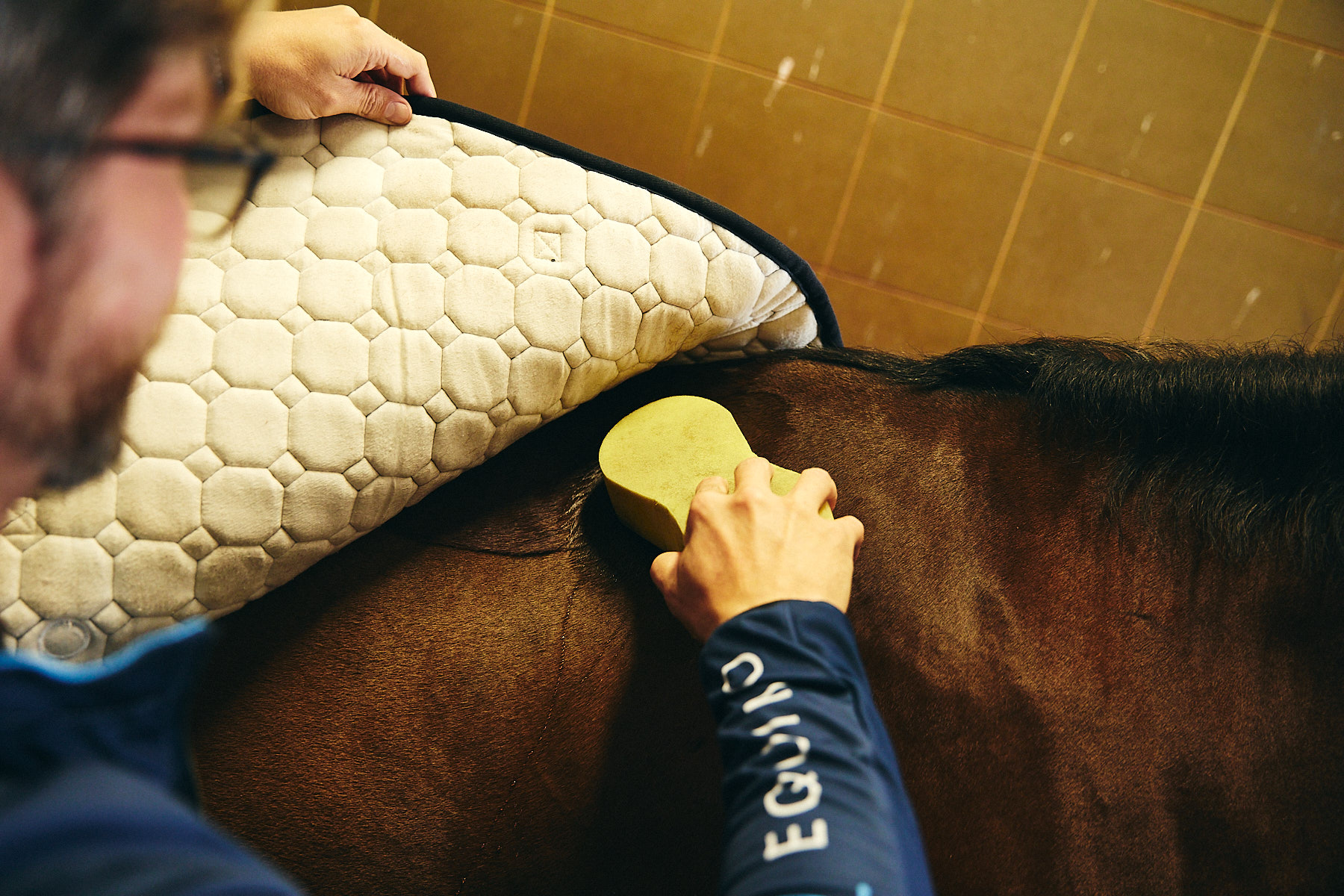
Use of the Heart Rate Set is simple: first, moisten the area under the electrodes…
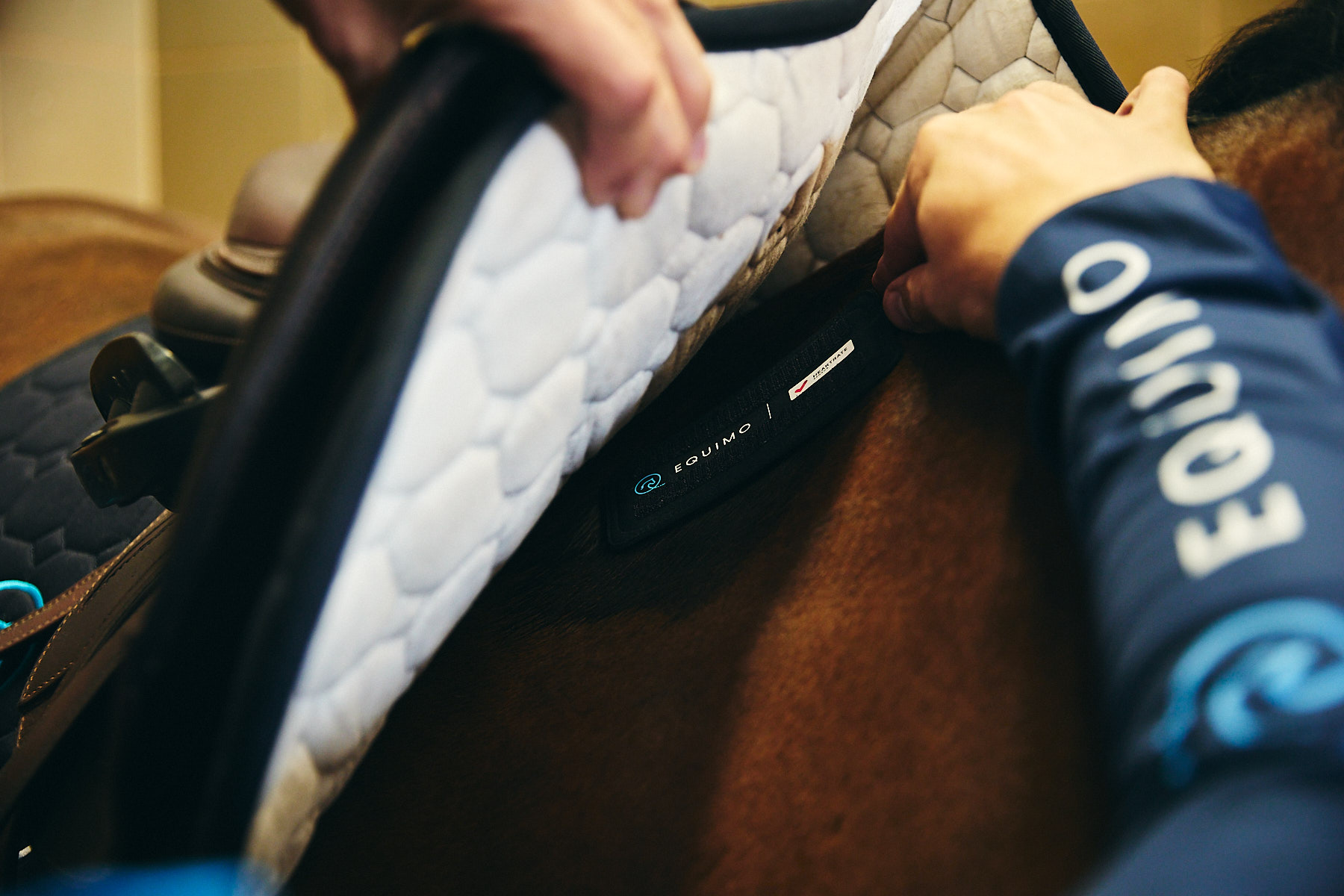
… place the electrodes under the saddle pad…
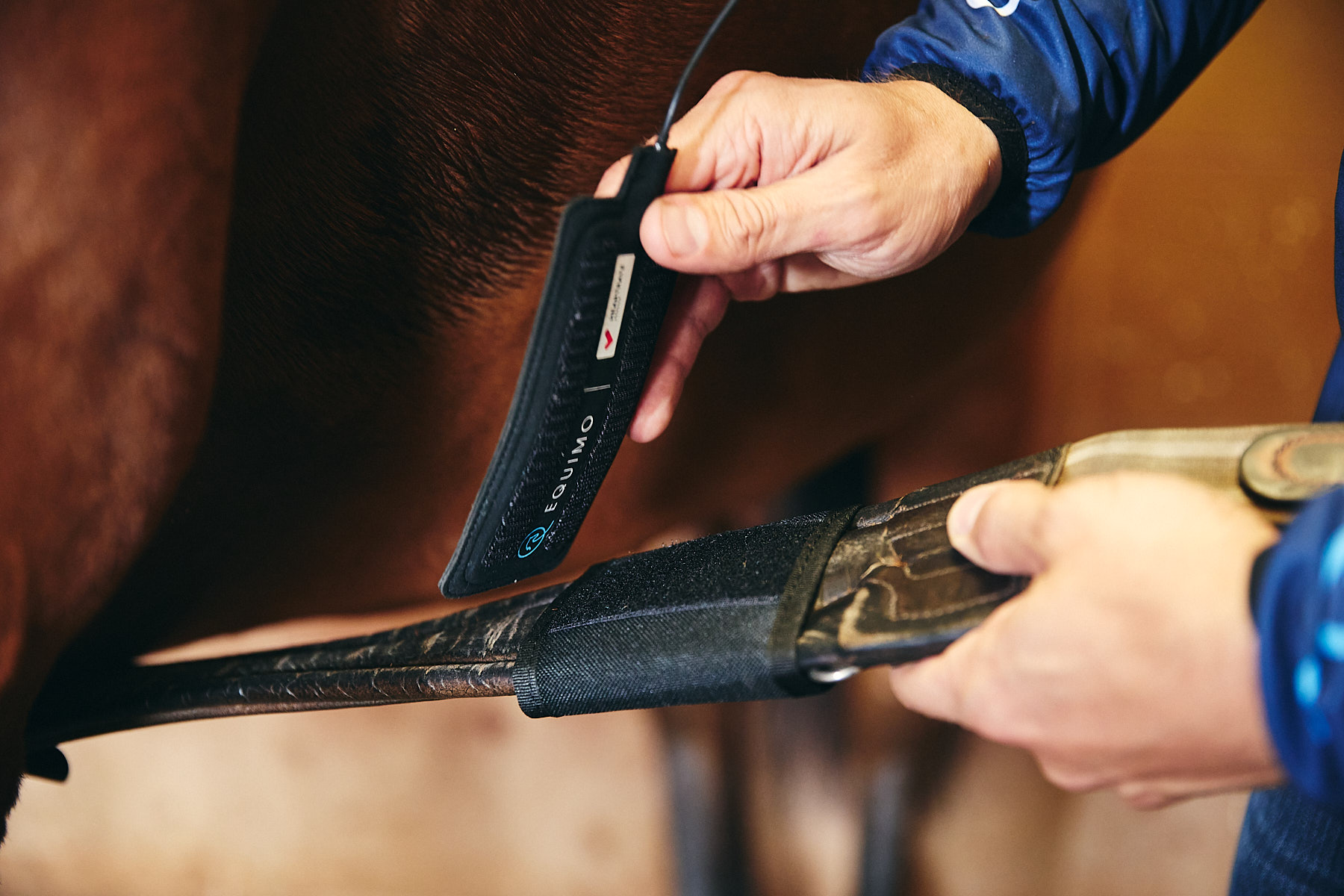
… and the girth…
![]()
… and connect them with EQUIMO on a saddle pad.
Then there’s nothing stopping you from a mindful training session!